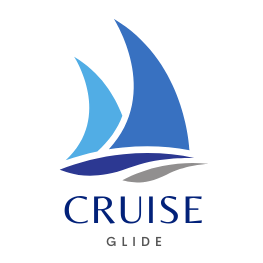Could the First Tokenized Cruise Line Set Sail in 2026?
The cruise industry is never unfamiliar with innovation, but the idea of presenting a tokenized ocean liner voyage is poised to redefine the ocean travel experience. Consider booking your ideal cabins, selecting your destination, making shore expedition reservations and even voting on onboard entertainment, all centralized with the help of a token-based platform infrastructure operating on blockchain.
This is a radical concept that can make passengers stakeholders and transform regular trips into participatory and decentralized experiences. As the crypto world progresses steadily and blockchain environments begin to find practical applications, it might be only a matter of time before the era of the token-based cruise experience begins. Wonder what the relationship between fintech and marine adventure is? Go on Live Pi price update to find out the trend in the new tokens before the wave.
What Does a Tokenized Cruise Line Even Mean?
In essence, to become tokenized implies that a cruise line creates its digital tokens, based on Ethereum, a sidechain, or even a dedicated blockchain, and sells or distributes them to members. These tokens would serve as DAO shares (Decentralized Autonomous Organization), allowing token holders governance rights, privileges to receive discounts, or exclusive experiences on board. Reservations of a stateroom may demand some tokens; it may appear that it is necessary to hold some tokens to vote on the scheduling of live performances and even revenue sharing on the profits gained on board could trickle back to the tokens.
The idea breaks the old way of ownership and booking. Travelers will not purchase a ticket through a travel agent or cruise aggregator site, as they now enter the decision-making ecosystem of the ship. The potential is that delivering traveler preferences and cruise experiences would be a closer journey, exposing a new level of customization and personalized loyalty. Throw in some token utility benefits, such as special boarding privileges or VIP lounge membership, or token-only events and you have an attractive value proposition to investors and vacationers.
Token Governance: Passengers Take the Helm
Community governance is one of the most attractive tokens that can be applied to a cruise line. It could be based on token voting, itineraries, on-board menus, entertainment schedules, and even staff training priorities. Through open and transparent voting, passengers have a genuine say in defining the way their journey begins. On the other hand, this democratic overlay is in stark contrast to the top-down decision-making used by traditional cruise lines.
In addition to voting, token governance may open up the possibility of on-chain proposals, such as introducing new ship amenities, environmental-oriented projects, or collaborative decisions. Coupling allurements to passengers and cruise arrangements can help lessen conformity and expand interest. Since cruise tokens will increase in value as they are sought and used on board, key participants will have equity in the brand rather than the temporary loyalty points.
Designing the Token Economy
Developing a strong token economy cannot be done without proper strategic efforts. The supply of tokens ought to walk the path of scarcity and accessibility. When there are too many tokens, they become too useless; when there are too few, they are exclusive. Issuance can be managed through a phase vesting in the following sequence: first, coronation and venture capital, then public issuance and onboard rewards. Smart contracts predetermine token spending, allowing for use at cabin upgrades, specialty dining areas, excursions, or to purchase NFT memorabilia.
To cultivate secondary market value, tokens may also be exchangeable on a decentralized exchange, allowing early participants to sell if they wish. Liquidity enhances the price discovery of tokens, while buy-and-burn mechanisms stabilize their value. Incremental spending in the form of onboard spending is a natural way to utilize token sinks, airdrops, or cashback incentives for loyal participants. All these would require open reporting, which is why token holders will have confidence that the economy is a fair and sustainable market.
Regulatory and Legal Considerations
The idea of launching a tokenized cruise line is accompanied by numerous regulatory issues as well. Various jurisdictions may have securities laws that apply depending on how the tokens are marketed and utilised. When tokens are used to represent profit-sharing, equity, or governance rights, that line can lead to regulation comparable to that of stocks or investment contracts. This will include disclosure requirements in a prospectus, the mandatory KYC/AML checks, and token holders’ periodic reporting requirements.
Sea-going gives new levels of complexity. Cruise lines are subject to severe maritime rules, safety inspections and port control. When token holders control part of the ship’s operations, there will be a need to clarify matters regarding liability and insurance. Provided tokens make access to co-ownership or share profits possible, the variable roles of passengers, such as investor and consumer, should be clarified appropriately as part of the legal framework.
Nonetheless, current token-dispensing efforts, such as DeFi protocols and on-chain games, have been more successful at evading regulatory penalties. The support of a tokenized cruise line may require the collective efforts of maritime lawyers, blockchain compliance specialists, and regulatory authorities to develop a legally viable model.
Technological Infrastructure and Partnerships
To ensure that a tokenized cruise becomes a reality, it is necessary to have a concrete blockchain infrastructure. It does not matter whether the development is on Ethereum due to its convenience, on Layer-2 due to its performance, or on a custom blockchain with special features to suit specific needs. Still, the technology must facilitate secure transactions, innovative contract management, and ensure traceability.
The requirements of real-world integration include onboarding of the digital wallet, point-of-sale token payment, and the voting kiosk. The mobile apps must enable the passengers to handle tokens, vote on proposals and keep track of itinerary developments. The backend has to talk to cruise reservation systems, crew terminals and finance software to synchronize tokens with bookings, payments and revenue.
Cooperation would speed up acceptance and belief. Partnership with reputable blockchain companies improves trust. One can exchange the tokens received in collaboration with travel aggregators for other services. Strategic partnership with shipping companies will guarantee the technical trustworthiness and safety practices. Global exposure to this revolutionary model of cruising can be created through co-marketing with tourism organizations.
Financial Viability and Revenue Upside
Investors will want to see clear monetization schemes. The first capital to purchase or retrofit ships can be generated through token sales. The continued use of the tokens, such as for permitting cabin improvements, shore excursions, or onboard services, generates a continuous revenue stream and stimulates the value of the tokens. Second-hand trading offers capital gains to the first exploiters, who then catalyze a community in the process.
Additionally, token holders may develop a vested interest in the success of the ship and the brand, which can enhance loyalty and encourage repeat bookings. Other monetization methods include merchandise, NFT memorabilia, and partner promotions. The transparent token ledger also simplifies accounting and revenue sharing.
Nevertheless, there is a question of price volatility. When tokens are freely tradable, it is possible that speculative trading will drive up the prices of tokens to unaffordable levels, particularly in terms of the costs of cabins. As a countermeasure, cruise operators could tie cabin prices to stablecoins or the native currency and convert tokens at the point of booking. This can also be effectively smoothed by the use of a dynamic pricing model pegged on the demand and supply of tokens without locking out token users.
Is it possible that in 2026, the first tokenized cruise line will be launched? Technically, that is the case: blockchain ecosystems and travel tech have been developed to the point of a pilot. Industry doubts and regulatory difficulties persist, but the convergence of consumer desire, technological capability, and the small-scale nature of entrepreneurship could bring closure to this debate.






